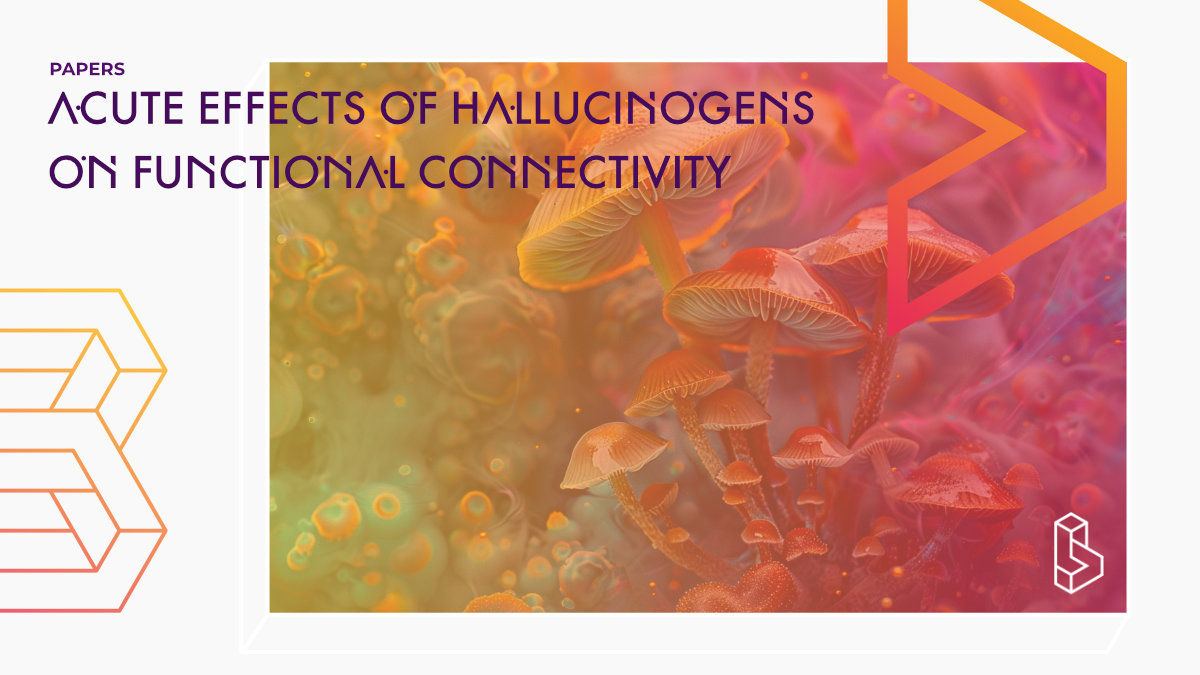This fMRI study explores the effects of psilocybin (a serotonergic psychedelic) and Salvinorin-A (a kappa-opioid receptor agonist) on resting-state functional connectivity (FC) in nonhuman primates. It reveals both drugs influence FC around the thalamus, claustrum, prefrontal cortex (PFC), and default mode network (DMN), with similarities and differences noted between them. The study underscores the cortico-claustro-cortical network as a critical model for understanding hallucinogen effects, highlighting the involvement of the claustrum, PFC, anterior cingulate cortices (ACC), and angular gyrus across different drug classes.
Abstract of Acute Effects of Hallucinogens on Functional Connectivity
“The extent of changes in functional connectivity (FC) within functional networks as a common feature across hallucinogenic drug classes is under-explored. This work utilized fMRI to assess the dissociative hallucinogens Psilocybin, a classical serotonergic psychedelic, and Salvinorin-A, a kappa-opioid receptor (KOR) agonist, on resting-state FC in nonhuman primates. We highlight overlapping and differing influence of these substances on FC relative to the thalamus, claustrum, prefrontal cortex (PFC), default mode network (DMN), and DMN subcomponents. Analysis was conducted on a within-subject basis. Findings support the cortico-claustro-cortical network model for probing functional effects of hallucinogens regardless of serotonergic potential, with a potential key paradigm centered around the claustrum, PFC, anterior cingulate cortices (ACC), and angular gyrus relationship. Thalamo-cortical networks are implicated but appear dependent on 5-HT2AR activation. Acute desynchronization relative to the DMN for both drugs was also shown. Our findings provide a framework to understand broader mechanisms at which hallucinogens in differing classes may impact subjects regardless of the target receptor.”
Authors: Frederick A. Bagdasarian, Hanne D. Hansen, Jingyuan Chen, Chi-Hyeon Yoo, Michael S. Placzek, Jacob M. Hooker & Hsiao-Ying Wey
Summary of Acute Effects of Hallucinogens on Functional Connectivity
Hallucinogens have been increasingly considered for mitigating psychiatric disorders, pain, and addiction. Psilocybin, a leading candidate in psychiatric disorders, metabolizes into the partial 5-HT2AR agonist psilocin, and may be a potential alternative to substances like ketamine or common SSRIs.
There are other hallucinogenic drugs, like Noribogaine, that are being investigated for therapeutic applications but otherwise are implicated with negative effects on users. Salvinorin-A, a potent dissociative hallucinogen, has similar characteristics to serotonergic psychedelics, but does not cause euphoria.
Psilocybin reduces functional connectivity in the Default Mode Network (DMN) and elevates functional connectivity between cortical networks and subcortical regions such as the thalamus. The claustrum is also suggested to support large-scale cognitive networks.
Find this paper
Acute Effects of Hallucinogens on Functional Connectivity: Psilocybin and Salvinorin-A
https://doi.org/10.1021/acschemneuro.4c00245
Paywall | Google Scholar | Backup | 🕊
Cite this paper (APA)
Bagdasarian, F. A., Hansen, H. D., Chen, J., Yoo, C. H., Placzek, M. S., Hooker, J. M., & Wey, H. Y. (2024). Acute Effects of Hallucinogens on Functional Connectivity: Psilocybin and Salvinorin-A. ACS Chemical Neuroscience.
Study details
Compounds studied
Psilocybin
Salvia Divinorum
Topics studied
Neuroscience
Safety
Chemistry
Study characteristics
Animal Study
Participants
3
Other Mammals

